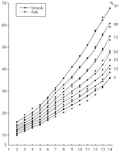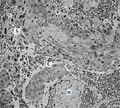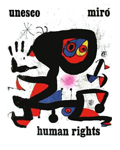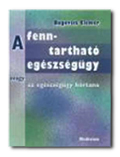The eLitMed.hu medical portal uses computer cookies for convenient operation. Detailed information can be found in the Cookie-policy.
Lege Artis Medicinae - 2006;16(02)
Content
[THE WORLDWIDE EPIDEMIC OF TYPE 2 DIABETES - CAUSES AND CONSEQUENCES]
[The prevalence of type 2 diabetes mellitus has recently dramatically increased worldwide. While many factors contribute to the startling data, including changes in the diagnostic criteria of glucose intolerance, increase of life expectancy, manifestation of diabetes at younger ages, and increased detection of unrecognized diabetes due to more efficient screening, the genuine, steep rise in the incidence of diabetes is explained by the increasing prevalence of obesity. Among the late complications of both diabetes and obesity, cardiovascular diseases are particularly important. Insulin resistance due to visceral obesity plays a central role in the pathomechanism of type 2 diabetes. In the prevention of both type 2 diabetes and obesity, non-pharmacological intervention such as life style changes should be considered first. Supplementary pharmacological treatment should target all cardiovascular risk factors.]
[LOWERING THE CHOLESTEROL LEVEL TO THE TARGET VALUE BY STATINS]
[The clinical application of statins has opened new perspectives in the therapy of atherosclerosis. Clinical studies have provided firm evidence that the achievement of the recommended lipid values in cardiovascular patients stops, or even reverses, the progression of atherosclerosis. Beside the cholesterol lowering effect this result is due to a complex vasoprotective, socalled pleiotropic mechanism. In the past two years a number of interventional trials confirmed that the lower the low density lipoprotein cholesterol level is reduced to, the lower the patient's cardiovascular risk. Based on international epidemiological trials the target value of the low density lipoprotein cholesterol of the most seriously ill, very high risk patients was defined as 1.8 mmol/l. The available statin preparations have only been able to achieve this low level of low density lipoprotein cholesterol in a portion of patients. Rosuvastatin, a recently developed statin derivative, however, can be successfully used even in monotherapy to achieve the target low density lipoprotein cholesterol value in the majority of patients with high cardiovascular risk. As part of the Galaxy program, a large study on the antiinflammatory and antiatherosclerotic properties of rosuvastatin will be conducted in the near future.]
[THE GENETICS OF INFLAMMATORY BOWEL DISEASE]
[The pathogenesis of inflammatory bowel disease is only partly understood; various environmental and host factors (e.g., genetic, epithelial, immune and non-immune) are involved. It is a multifactorial polygenic disease probably with genetic heterogeneity; some genes confer susceptibility to IBD in general, while others specifically increase the risk of ulcerative colitis or Crohn's disease or affect location (localized or extensive) and/or behaviour (e.g., mild, severe, aggressive). This review presents recent advances in the genetics of inflammatory bowel disease including chromosome segments newly recognized to be involved in inflammatory bowel disease as well as the role of NOD2/CARD15, SLC22A4/A5 and DLG5. The increasing genetic information provides, for the time being, a better understanding of the pathogenesis of the disease thus setting a basis for potential targets for therapeutic intervention. In the future, however, genetics may also help in refining the diagnosis or predicting disease course.]
[PRINCIPLES AND NATIONAL REGULATIONS OF BLOOD DONOR QUALIFICATION]
[During the assessment of blood donor candidates the physician considers two factors; first, whether the loss of 450 ml blood would be of any risk for them (e.g., because of hypotension) and second, whether they have any illness, current (seasonal allergy, antibiotic use, etc.) or chronic conditions (oncological or autoimmune disease, drug use, etc.) that may confer risk to the recipient. For the safety of blood preparations it is essential that the donors are dependable individuals who lead a lifestyle of low risk of getting infected (by HIV, hepatitis, etc.). Hungarian practice concerning donor qualification are generally stricter (e.g., because of the differences in the health care system, in the health culture) than the directive of the European Union. This implies that a number of donor candidates are temporarily or permanently disqualified. Following medical interventions (e.g., surgery, transfusion), environmental effects (e.g., radiation exposure) and recovery from diseases, however, the donor may again give blood after a certain period of time. Certain chronic diseases, if properly managed and if the patient is in perfect general condition, do not constitute a cause for exclusion either. General practicioners can greatly contribute to safe national blood supply by identifying and advising potential blood donors.]
[THE PROBLEM OF CHILDHOOD OBESITY]
[Obesity represents a major public health problem in both developed and developing countries having rapidly increased in prevalence in the past two decades. Childhood obesity is of particular concern. Two of its associated diseases require special attention; metabolic syndrome and type 2 diabetes one of its components that are increasingly diagnosed in childhood. A key to prevention and treatment is healthy lifestyle. The importance of education to healthy lifestyle from early childhood cannot be overemphasized.]
[CYCLIC RIFAXIMIN TREATMENT IN UNCOMPLICATED COLONIC DIVERTICULAR DISEASE - AN OPEN LABEL STUDY]
[INTRODUCTION - Aquired diverticular disease of the colon is extremely common in developed countries. Poorly absorbing antibiotics may have beneficial effects on symptoms in long-term treatment. An open study was conducted to evaluate the efficiency of rifaximin in the prevention of complaints and recurrent diverticulitis. PATIENTS AND METHODS - Thirty consecutive patients with proven uncomplicated colonic diverticulosis were selected to receive rifaximin 200 mg bid for the first six days of every month, for six months. They were also advised to consume an high-fibre diet. Patients were reviewed on a monthly basis by clinical examinations; changes in symptom variables (lower abdominal pain, upper abdominal pain, bloating, tenesmus, diarrhoea, abdominal tenderness) were evaluated on a 10-point Visual Analogue Scale (VAS), and the presence of acute diverticulitis (abdominal mass, fever, US) was ruled out at every monthly visit. RESULTS - Twenty-nine of 30 patients completed the study. After six months of cyclic rifaximin treatment the global symptom score decreased in all patients compared to the baseline. Acute diverticulitis, other complications or side effects were not observed. CONCLUSIONS - In this open study cyclic administration of a relatively low dose of rifaximin in uncomplicated colonic diverticular disease resulted in the reduction of abdominal complaints and prevented recurrent diverticulitis. This effect might be explained by a reduced metabolic activity of intestinal bacterial flora.]
[OVARIAN CHORIOCARCINOMA - A MOLECULAR PATHOLOGIC APPROACH TO DIFFERENTIAL DIAGNOSIS]
[INTRODUCTION - Gestational and non-gestational choriocarcinoma, the two types of choriocarcinoma with distinct aetiologies, cannot be differentiated by conventional histological or immunohistochemical methods. In certain cases the verification of the origin of the tumour by molecular biological techniques is essential for prognostic and therapeutic reasons. CASE REPORT - A 22-year-old woman presenting with acute abdominal pain was examined and operated on. During surgery a tumour was found in the right ovary. “Pure” choriocarcinoma was histologically diagnosed and gestational origin was supposed based on the distinct clinical features and histological picture. This was subsequently confirmed by molecular genetic testing. Parallel VNTR (variable number of tandem repeats) analysis by PCR of DNA from the tumour tissue and the patient's peripheral blood was performed. The pattern showed the presence of an allele presumed to be of paternal origin. (Blood sample from the father was not available.) One regimen of Vepesid, Cisplatina and Bleomycin was applied, and more than three years after the diagnosis the patient is free of disease. CONCLUSION - Multidisciplinary cooperation led to an accurate diagnosis and successful treatment. Non-radical surgery with the preservation of fertility followed by proper early chemotherapy provided excellent results.]
1.
Clinical Neuroscience
[Headache registry in Szeged: Experiences regarding to migraine patients]2.
Clinical Neuroscience
[The new target population of stroke awareness campaign: Kindergarten students ]3.
Clinical Neuroscience
Is there any difference in mortality rates of atrial fibrillation detected before or after ischemic stroke?4.
Clinical Neuroscience
Factors influencing the level of stigma in Parkinson’s disease in western Turkey5.
Clinical Neuroscience
[The effects of demographic and clinical factors on the severity of poststroke aphasia]1.
2.
3.
4.
5.























